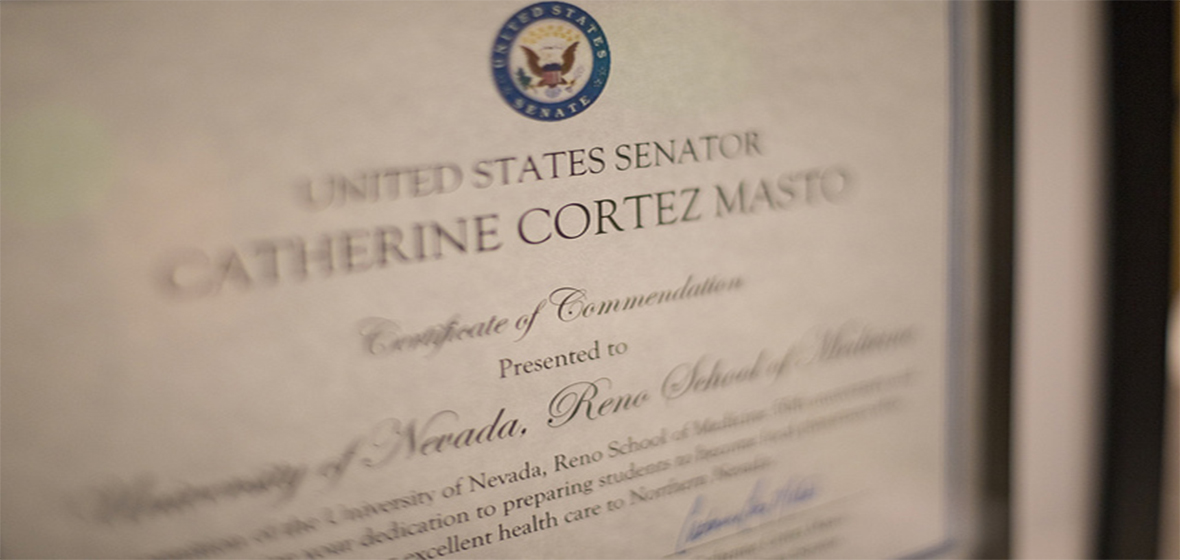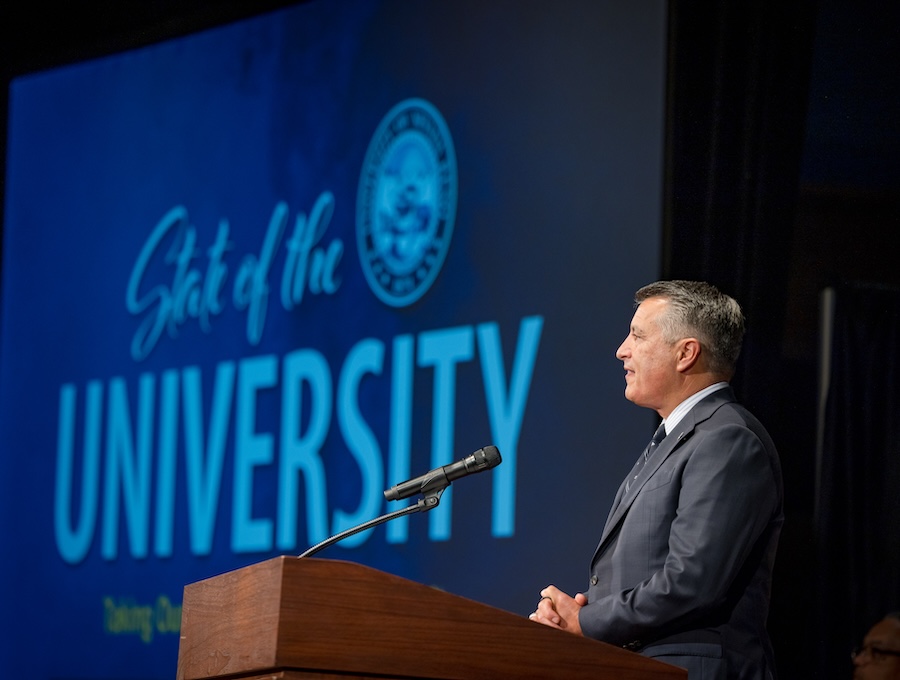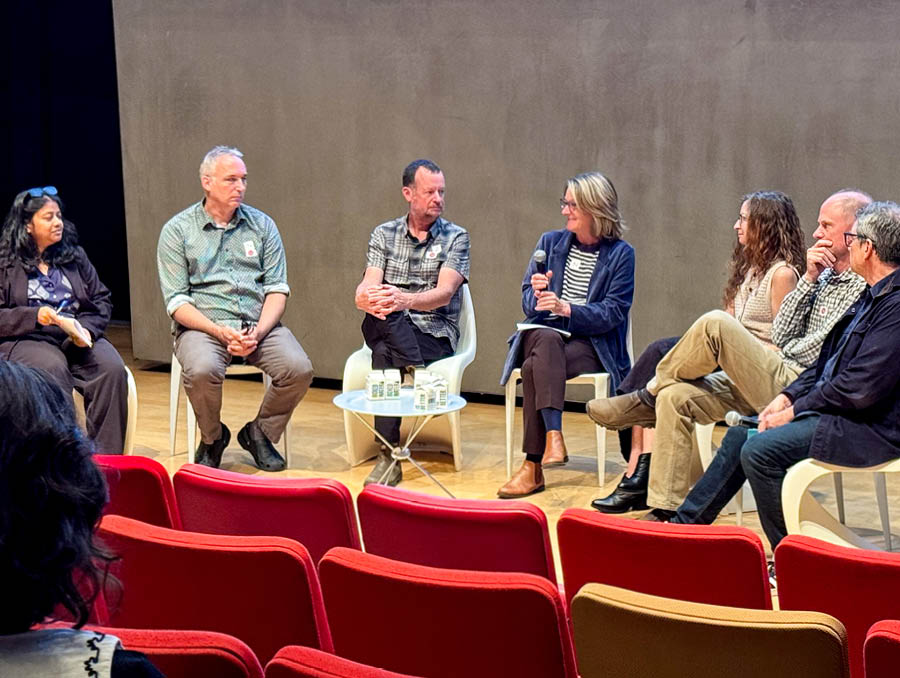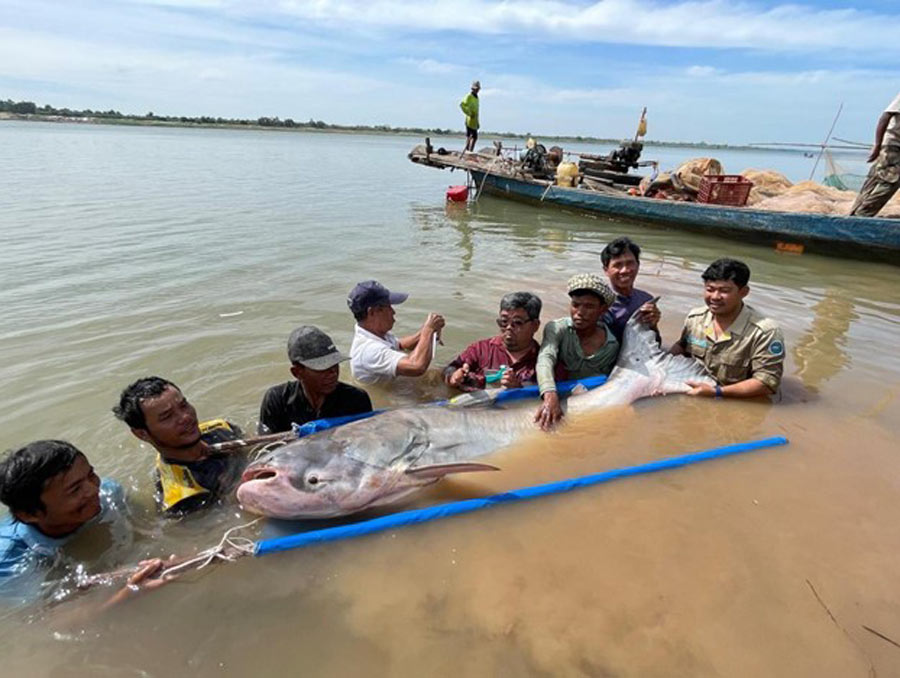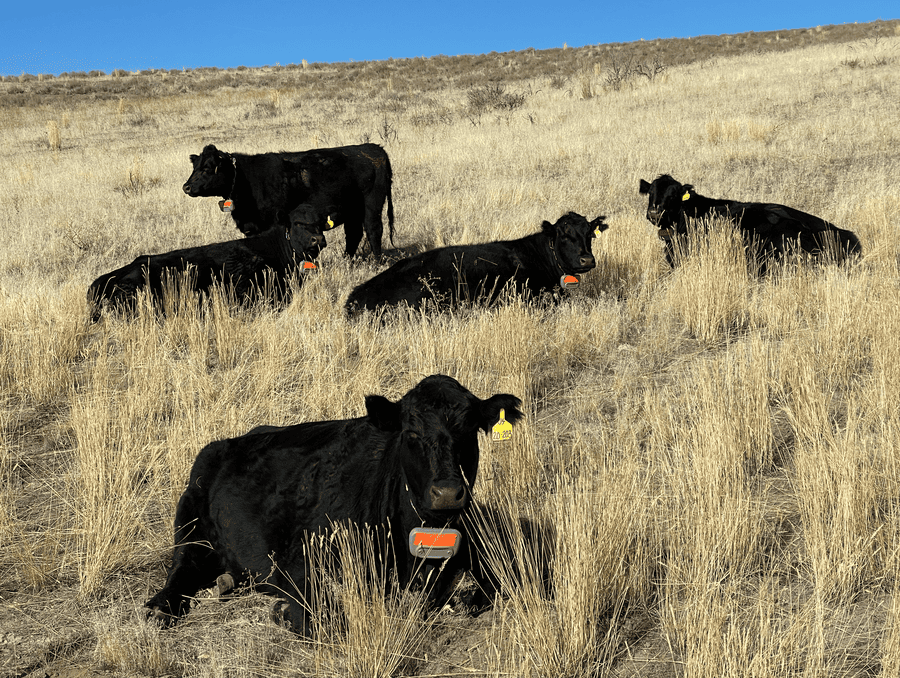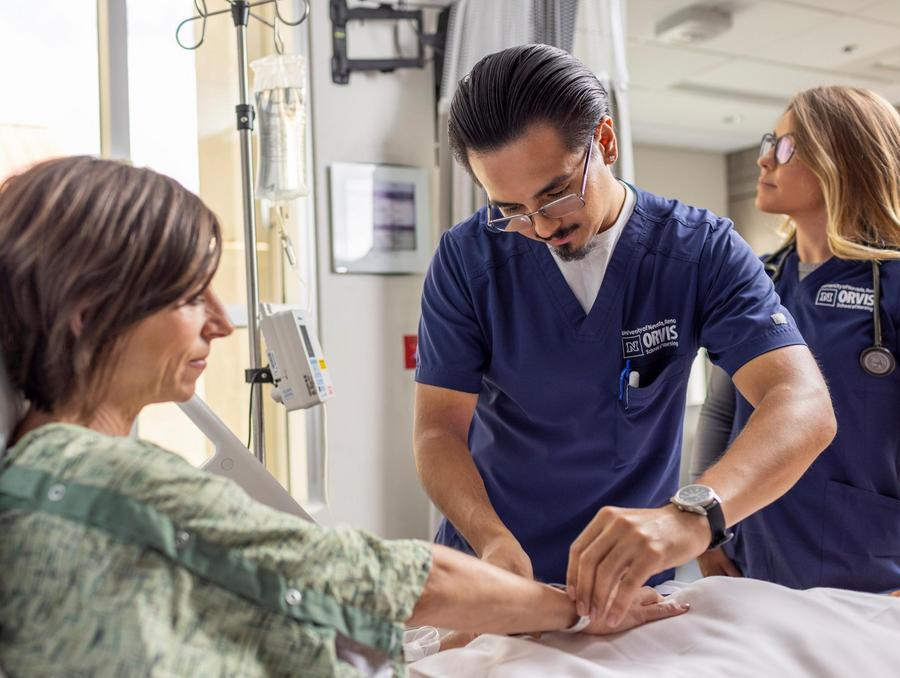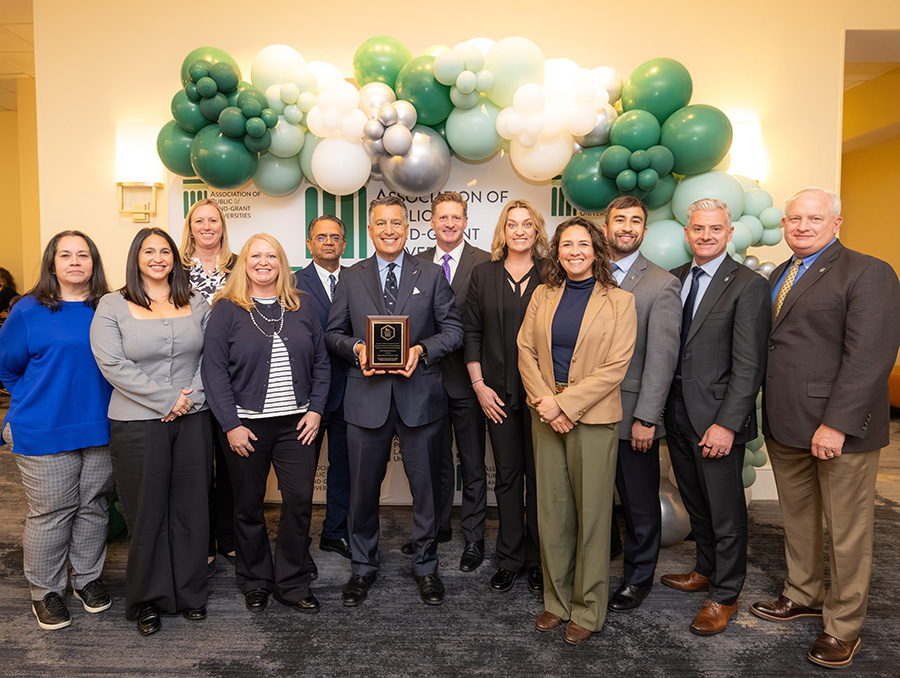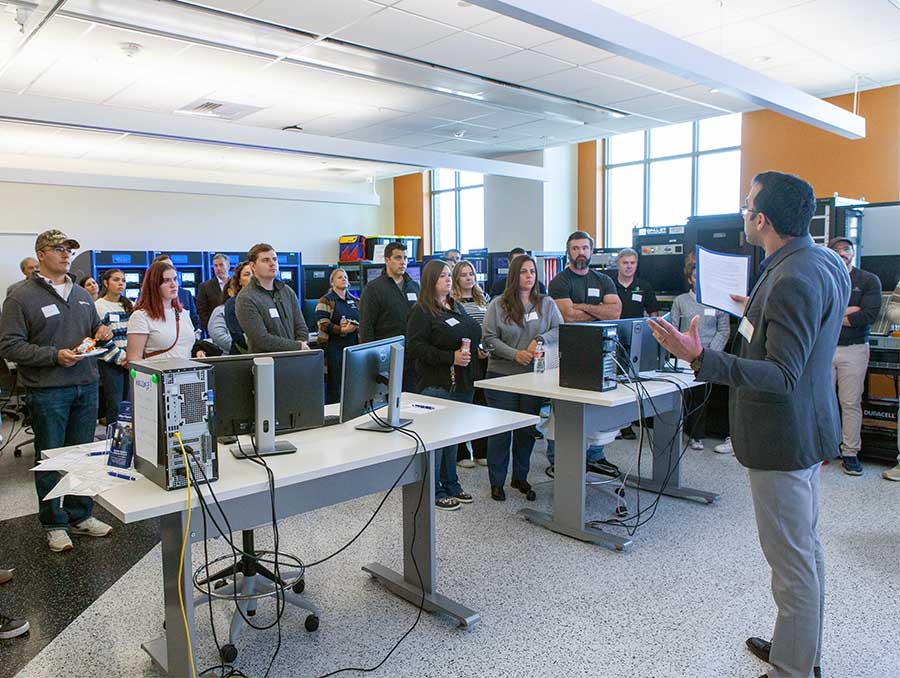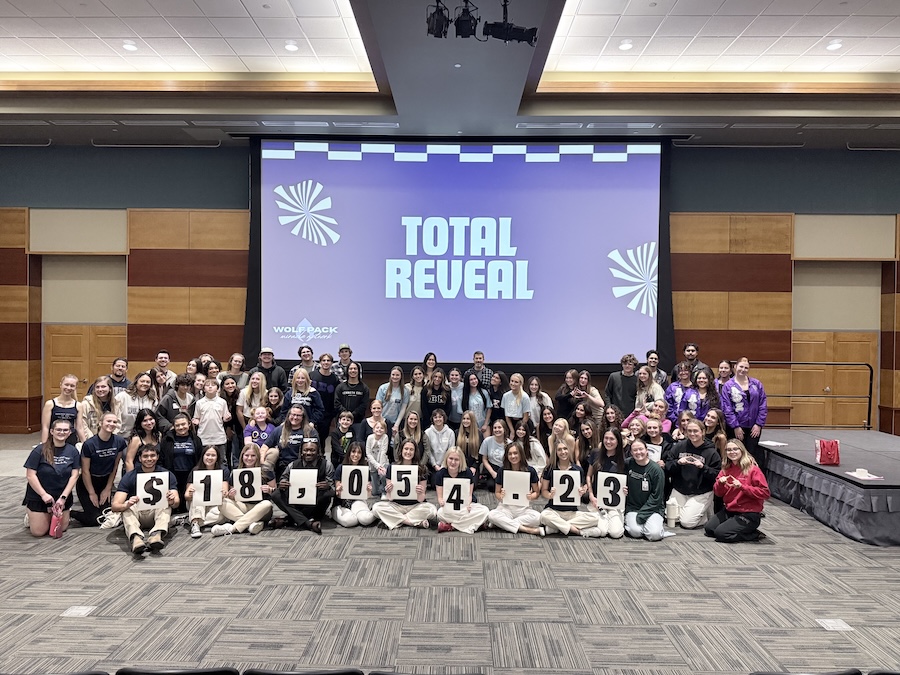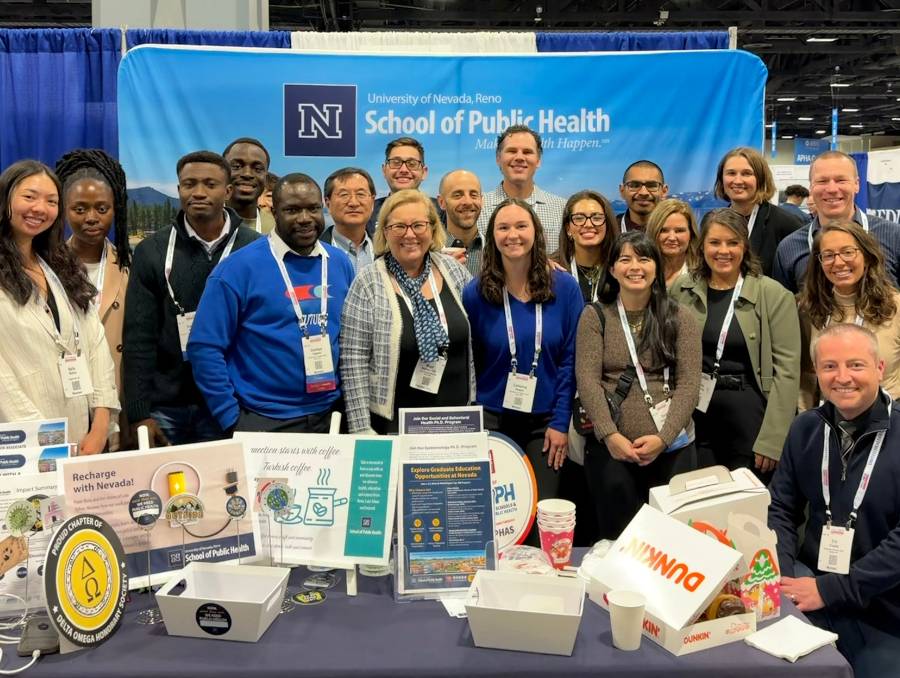March 25, 2019 marks the 50th anniversary of Nevada's first public medical school, the University of Nevada, Reno School of Medicine. Dr. Tom Kozel, Dr. Darryll Patterson and UNR Med Class of 2020 President Misha Fotoohi speak to the School of Medicine's unrivaled history, unforgettable present and unlimited future.
Unrivaled History: Dr. Tom Kozel, professor of microbiology and immunology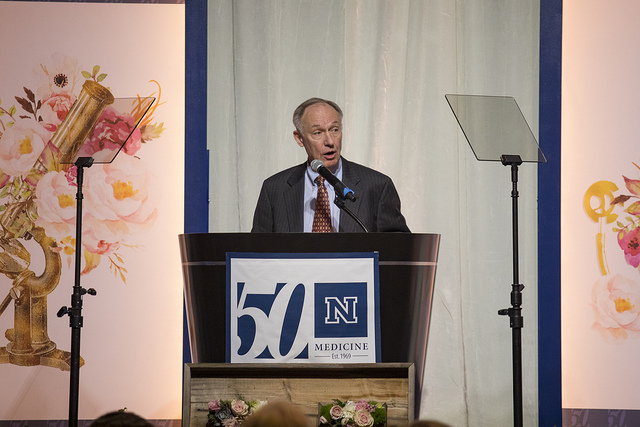
Tenacity, audacity, vision and commitment--these qualities led to the founding of UNR Med 50 years ago. The tenacity of Dr. Fred Anderson was critical to the creation of the medical school by the Nevada Legislature in 1969. The audacity of our founding dean, Dr. George Smith, produced a medical school that was unique in its organization, mission and curriculum. The vision of the early faculty attracted national attention and funding by key foundations. Finally, the commitment of time and energy by community physicians was central to a clinically focused curriculum.
I came to UNR Med as a new member of the faculty in 1971, arriving six weeks before the first class started. In many ways, my career development tracked the evolution and maturation of the medical school.
I vividly remember my first lecture. I went to the blackboard and sketched out the results of a stunning new report that described the duality of our immune system-the existence of B cells and T cells. Little did I know that, 10 years later, this discovery would be fundamental to our understanding of AIDS.
There were many, many heroes in the early days.
One member of the founding faculty, Dr. Russell Brown, had just retired as vice president of the Tuskegee Institute and director of the Carver Foundation. Russ brought me to Nevada and became my mentor and the most important influence in my professional development.
Dr. Tom Scully was our director of clinical sciences. Tom pulled together community physicians to serve as the backbone of our instructional program. He was the best teacher I have encountered in my academic career.
Philanthropy from individuals and foundations, both local and national, were central to the founding of the medical school-and obviously remain a key element of progress to this date.
At a time when the legislature was wavering in its decision to create the medical school in 1969, Howard Hughes-yes, that Howard Hughes-made a critical pledge of 6 million dollars. Assembly Bill 130 passed by a single vote.
Other early supporters included the Kellogg Foundation, the Commonwealth Foundations and Edward Manville, who endowed the first faculty chair.
I remember the day that Claude Howard walked into the medical school with his checkbook and a shoebox filled with newspaper clippings about UNR Med. With his support, construction of the Howard Building made possible our journey to being a research-intensive institution.
But before we were a medical campus with buildings named for Claude Howard, Sol and Ella Savitt and William Pennington, we were a two-year medical school. Our first class of students came to us in 1971 for their basic science and pre-clinical education. They then transferred to degree-granting medical schools to complete their training.
By the mid-1970s, the Carnegie Commission recommended that two-year schools be converted to four-year, degree-granting institutions. It became clear that the two-year model was no longer sustainable.
With the blessing of the Nevada Legislature, UNR Med became a four-year, degree-granting institution in the late 1970s. And in May 1980, we graduated our first four-year class of physicians.
Under the leadership of Robert Daugherty, who served as dean of UNR Med from 1981 to 1999, we entered our next developmental phase-consolidation.
During Bob's time, the basic sciences were expanded, led by Kent Sanders in physiology and David Westfall in pharmacology. This focus on the basic sciences laid the foundation for what would become one of the most productive research programs in the country.
Clinical programs were expanded in Las Vegas. We underwent repeated cycles of predictably successful accreditation thanks to the leadership of Myles Standish. And medical education was established in Nevada's rural areas.
One of my lasting memories of that time is Dean Daugherty's annual rural tour. Each year, from under the brim of a Stetson hat, Bob would drive a van filled with department chairs to the far ends of the state.
Nevada is now blanketed from end to end with our most important product-our learners.
From that very first two-year class, we realized our students were special. We had a small class that was able to bring out the best in us and in each other.
UNR Med alumni are found throughout health care in Nevada. They are national leaders in academic medicine, health care delivery and health care policy. They have local, national and global impact.
Stated quite simply, our graduates make us look good. They make us proud to be associated with this medical school. And they are key to our unrivaled history.
Unforgettable Present: Dr. Darryll Patterson, chair and associate professor of internal medicine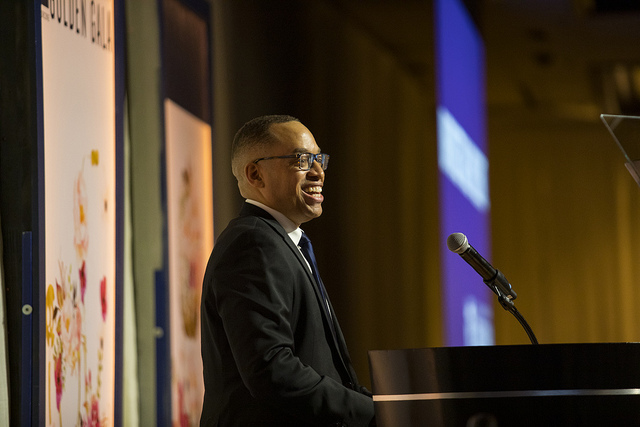
Through conversations with faculty members, I know a bit about what medical education looked like before I was a medical student. I can attest to the dramatic changes that have taken place since I completed my M.D.-event though I swear 1997 wasn't that long ago!
The traditional medical student spent their first two years in classrooms-all day every day. Faculty lectured, proving one-way instruction to students who furiously scribbled down this "hidden knowledge" only accessible to the faculty member.
Yesterday's first- and second-year students didn't see patients-just Kodachrome and PowerPoint slides.
Today, there is a strong connection between faculty and learners at UNR Med. We engage learners, which enhances the learning environment, which benefits participation. Our job is to synthesize and help students sift through and make relevant the available information.
Today's UNR Med student is exposed to clinical medicine during their first year. They see patients with us and practice their interviewing skills, empathy and relationship-centered communication. The students very much enjoy these interactions, where principle and theory meet practice. And we know it's making them better physicians.
For faculty, this is a great opportunity to instill a sense of ownership and duty, while giving back to the profession.
We've incorporated this integrated model into our curriculum, asking students to "tie in" basic science and clinical practice concepts. A discussion of a patient with chest pain goes beyond cardiology to include anatomy, pharmacology, ethics and clinical reasoning.
I remember one third-year student in particular, who was assigned to me in my outpatient practice. We were evaluating a patient with a low sodium level, and I was looking forward to seeing how my student would approach this issue. Low sodium or hyponatremia is a challenging concept, no matter how seasoned the physician, so it would be rare for a third-year student to understand fully this concept.
Since I've been teaching this topic for over a decade, I was prepared to impress this student with my medical knowledge. Plus I remembered this particular student from my lecture on this topic over a year ago-he asked a lot of questions.
I asked, "How do you approach this patient with low sodium levels?" He smiled, pulled out a small, tattered notebook tucked away in his lab coat, and showed me a flowchart he had designed from scratch, using multiple sources and his own experiences managing patients with low sodium.
He told me this was his fourth edition of the flowsheet, developed over months using basic science instruction and clinical medicine. His integration of the two was beautiful! I couldn't have been more impressed or pleased to see our student demonstrate such aptitude for learning and application.
Opportunities for early patient interaction have also changed who we're looking for during the application process. MCAT scores, grades and clinical experience certainly speak to intellect and discipline. However, it's imperative that our students possess humanistic qualities to complement their medical knowledge.
We've exchanged our admission process for a holistic one, reducing across-the-desk interviews in favor of hypothetical scenarios which evaluate communication skills, professionalism and integrity. As faculty members, we want these qualities in our students. As patients, we need these qualities in our doctors.
Nevada has a diverse patient population. Our students have to relate and respond to the diversity they encounter daily. We've expanded our instruction to prepare our learners to meet the challenges our population faces-chronic pain management, geriatrics, behavioral health, health disparities and rural medicine-augmenting the learning environment to improve problem solving and clinical outcomes for patients.
Since tomorrow's physician provides care within a team structure, our class sizes are small, allowing students to participate in team-based learning opportunities, as well as interprofessional learning experiences. Students learn how to engage members and manage dispute within these cohorts.
Through our community partners and community faculty, students, residents and fellows rotate through community hospital systems and private practices, being supervised and mentored as they experience primary care and subspecialties.
Training the full spectrum-medical students to residents and fellows to independent practitioners who provide the best care possible-this is the key to achieving our vision of A Healthy Nevada.
Our residents and fellows in particular are our pipeline to retaining Nevada-based physicians. Academic and community faculty share the responsibility of molding residents and fellows into independent physicians. We mentor in the more refined aspects of patient care. They share ideas on how to improve the system. We publish joint biomedical research, swap experiences and opinions, joys and hardships, and highs and lows.
A graduate from our residency program is currently finishing a subspecialty fellowship in the Midwest. She recently contacted me because she wants to return to Reno, become academic faculty and join the instructors who trained her. She wants to teach medical students, train residents and return to care for the underserved populations that she served when she was a resident.
UNR Med is training physicians who are leaders in health care. Physicians who meet the needs of their patients. Physicians who promote wellness in their patients, and in themselves.
They're knowledgeable in current diagnostics and therapeutics. They're good listeners who treat patients with respect. They include patients' values in medical decision making. And they treat individuals like people instead of diseases.
How do we develop a physician workforce prepared to meet the challenges facing Nevadans?
We're doing it right now, every single day, in this ... our unforgettable present.
Unlimited Future: Misha Fotoohi, Medical Student and President of UNR Med's Class of 2020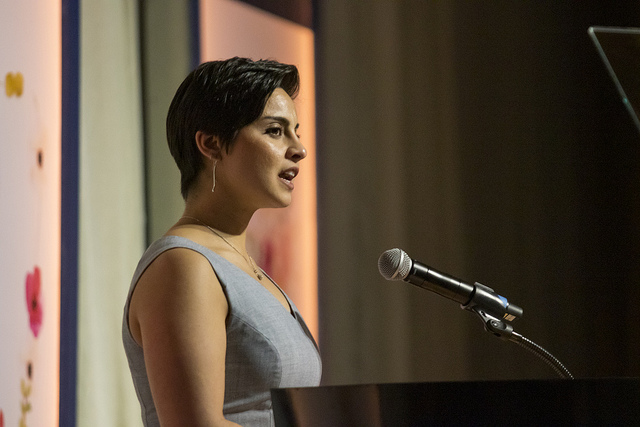
Even though UNR Med is northern Nevada's only medical school, our administration is committed to keeping class sizes small. As a result, my classmates and I have been able to create deep bonds of friendship and comradery. We've also had the privilege of forming relationships with our esteemed faculty, defined by mutual respect and commitment to the field of medicine.
Beyond more personal relationships and better communication, this tight knit culture leads to more experiences for students-be it clinical, teaching or leadership opportunities.
The Student Outreach Clinic is another prime example of opportunity for students. At these student-organized clinics, medical students at all stages of their educational journey-beginning in year one-find themselves at the forefront of patient care several times a month. While we're gaining experience and a better understanding of what it means to be trusted with a patient's care, individuals with limited access to health care are accessing a positive and much-needed interface with the health care profession.
Much like the Student Outreach Clinic, UNR Med's curriculum is student-centered. From the outset of first year, a strong emphasis is placed on collaborative teaching and learning-with unwavering support from faculty members. This unique environment encourages discussion, communication and novel problem solving. We are exposed to relevant and important information. We are placed in situations where we have to execute intellectual skills as well as social skills. We are given opportunities that prepare us to be better physicians-and better people.
Over the years, our School of Medicine has fostered a strong, collaborative alliance with local physicians. This community partnership allows members of our student body to interact closely with practitioners as well as their patients.
This year, my rotation through Family Medicine brought me close to many faculty physicians, several of whom I now confide in and trust as mentors.
One quintessential moment was when Dr. Catherine McCarthy, one of the family medicine physicians, personally sought me out and took me to Yerington for a rural women's health clinic. We spent the hour-and-a-half drive talking and connecting with one another. I spent an entire day working one-on-one with her, being heavily involved in patient care. This experience is one of many that UNR Med students are able to engage in.
These experiences helped me discover my passion for primary care, and have influenced me to specialize in family medicine and primary care.
UNR Med continues to grow and expand. Our classrooms and laboratory facilities are up-to-date. New residency programs are under development. And a building was recently purchased to expand clinical services and clinical teaching.
Each year, comments and suggestions from current students are incorporated into the upcoming year, ensuring constant growth and improvement.
We are so fortunate to be truly known as individuals, with individual strengths, weaknesses and need-a medical school experience that is far less common than one might expect.
I'll close with a particularly striking memory about a very personal experience.
It was late into my second year, the day of our block 9 final. I've always had some moderate test anxiety exacerbated by a nasty habit of changing answers-usually from right to wrong.
Despite how many times I had silently chanted the mantra "do not change your answers," I found myself second guessing with only minutes left in the exam-and of course switching my answers.
I pressed "submit," and my stomach dropped. The number on my screen was one of the lowest I had encountered in medical school so far. As I reviewed my wrong answers, I saw that most of them were the last minute changes I had made. I was seething with self-directed anger, frustration and loathing. Almost immediately, I packed up my belongings and left, probably with tears in my eyes.
Later that night I answered a call from a number I didn't recognize. The voice on the other end said "Hi, Misha? This is Brady Janes."
Dr. Janes? Dr. Janes was the coordinator for block 9. I began to panic. Oh no. Why is she calling? To tell me I failed? To say I have to remediate? I was horrified. But what she said next stunned me.
"Are you OK?"
Dr. Janes saw me leaving the review, obviously upset. Since she had never seen me act this way before, she was concerned. She didn't call to talk about my score, or what it meant. She only called to see if I was OK.
At that moment I broke down and talked to her-not student-to-faculty, but person-to-person-comforted that someone had personally reached out, just to see how I was doing. Just to make sure I was OK. That has been one of the most meaningful moments for me during my time as a student at UNR Med.
The future of UNR Med is promising and exciting. But regardless of how we advance and progress, the same close knit and intimate culture-the core of UNR Med-remains. It's why I'm here. It's what makes UNR Med great. And it's what sets us up for an unlimited future.
